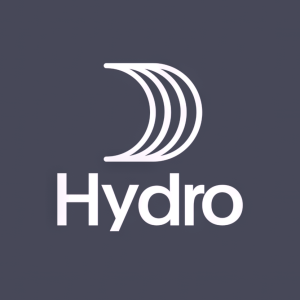Norsk Hydro: Performance and capital discipline, supporting strong results
Rhea-AI Summary
Norsk Hydro (NHYDY) reported strong Q2 2025 results with adjusted EBITDA of NOK 7,790 million, up from NOK 5,839 million year-over-year. The company generated NOK 5 billion in free cash flow with a twelve-month adjusted RoaCE of 12%.
Key strategic actions include reducing 2025 capital expenditure target by NOK 1.5 billion to NOK 13.5 billion, implementing an external hiring freeze for white-collar positions, and conducting a workforce review. The company successfully placed a EUR 500 million Green Bond with a 3.75% coupon.
Despite market uncertainties and challenges in wind power supply, Hydro maintains a robust power sourcing portfolio. The company is ahead of its improvement program targets for 2025, with 70% of the NOK 600 million target achieved year-to-date through operational, procurement, and commercial initiatives.
Positive
- Adjusted EBITDA increased 33% year-over-year to NOK 7,790 million
- Strong free cash flow generation of NOK 5 billion
- Successful placement of EUR 500 million Green Bond
- 70% of NOK 600 million improvement program target achieved ahead of schedule
- Compensation of up to EUR 90 million from terminated wind power agreement
- 50% year-to-date increase in greener product sales revenue
Negative
- NOK 400 million impairment on energy portfolio in Brazil
- Challenges with wind power suppliers in Sweden affecting renewable energy supply
- Higher raw material costs, particularly alumina
- Reduced capital expenditure guidance indicating cautious outlook
- External hiring freeze implemented due to market uncertainty
Hydro’s adjusted EBITDA for the second quarter of 2025 was NOK 7,790 million, up from NOK 5,839 million in the same quarter last year. The results increased from higher aluminium and energy prices, and realization of previously eliminated internal profits. This was partly offset by negative currency effects and higher raw material costs, mainly driven by higher alumina cost. Hydro generated NOK 5 billion in free cash flow, while the twelve month adjusted RoaCE ended at 12 percent.
- Strong results amid uncertain markets
- Reducing capital expenditure target for 2025 by NOK 1.5 billion, to NOK 13.5 billion
- Introducing external hiring freeze and structured review of white collar workforce
- Robust power sourcing portfolio amid challenging wind and solar markets
- Improvement programs ahead of target for 2025
"I am pleased with the strong results this quarter, as the global market uncertainty is continuing. Hydro is taking proactive measures to reinforce our long-term resilience and operational efficiency. We are taking down our 2025 capital expenditure guiding by NOK 1.5 billion. Hydro has also implemented an external hiring freeze for white collar workers, pending a review of current and future manning needs,” says Eivind Kallevik, President and CEO of Hydro.
The global market has become increasingly uncertain, shaped by geopolitical tensions and shifting regulation. This heightened uncertainty complicates demand forecasting and capacity planning, and in response Hydro is reducing the capital expenditure guidance for 2025 by NOK 1.5 billion, to NOK 13.5 billion, to ensure financial flexibility. Under the current political environment, investments will focus on flexibility, risk mitigation, and responsiveness to changing economic and policy conditions.
“We believe in the aluminium industry and we see demand for low-carbon aluminium continuing to grow. In the current situation, our focus is on preserving financial strength, improving capital efficiency, and maintaining room to maneuver. We have so far not seen big changes to our operations from tariffs and potential trade wars. Our main concern is whether the uncertainty will lead to a global economic downturn,” says Kallevik.
While long-term growth remains central to Hydro’s strategy, near-term priorities have shifted to operational efficiency, cost control and maintaining optionality. The ambition is to position the company to respond decisively as conditions evolve and opportunities arise.
In June, Hydro launched a structured review of the number of white collar positions to ensure alignment with strategic priorities and operational efficiency. This is part of a broader effort to reinforce financial discipline and enhance organizational flexibility. The review will help the company assess its current and future manning needs. On June 10, Hydro therefore implemented an external hiring freeze for white collar positions. Recruitment for blue collar positions in the business areas will continue as planned.
Reliable access to renewable energy is critical to Hydro’s low-carbon aluminium strategy. Since the fourth quarter of 2024, Hydro’s second largest wind power supplier in Sweden, Cloud Snurran AB, has faced financial and operational challenges. This has resulted in non-delivery of contracted volumes. Consequently, the power purchase agreement (PPA) between the parties was voluntarily terminated by mutual agreement in July 2025, with a negotiated compensation to Hydro of up to EUR 90 million. This development, along with previous challenges at Markbygden Ett AB, highlights broader risks in the Swedish wind market, particularly related to underperformance in production volumes leading to financial distress among producers. While wind energy remains an important part of the mix, these events reinforce the value of Hydro’s diversified and robust sourcing portfolio. The sourcing situation for the Norwegian smelters remains robust through 2030, and Hydro continues to actively pursue cost competitive renewable power opportunities.
In Brazil, ongoing grid constraints, transmission bottlenecks, and regulatory uncertainty have continued to limit solar and wind power deliveries, pressuring both volumes and pricing. Reflecting these structural challenges, Hydro has revised its return requirements for energy investments in the region. As a result, impairments of approximately NOK 400 million were recognized across parts of the energy portfolio. Despite these headwinds, operations at Albras, Alunorte and Paragominas remain stable, supported by renewable energy delivered under long-term PPAs.
Hydro targets NOK 6.5 billion in accumulated improvements by 2030, with 70 percent of the 2025 estimate of NOK 600 million achieved year to date, driven by operational, procurement and commercial initiatives. In the operational improvement program, Hydro Extrusions targets to reduce more than 100 full time equivalents by 2025 through automation to further boost productivity, safety, ergonomics and quality. In the commercial excellence program, greener product sales increased by approximately 50 percent year-to-date 2025 versus the previous year in upcharge revenue. The achievements include the first Hydro CIRCAL contract with a major North American automaker and a strong growth in low-carbon product sales.
On June 4, Hydro successfully completed the placement of its inaugural European Green Bond, issuing EUR 500 million in senior unsecured notes under its Euro Medium Term Note (EMTN) programme. The 8 year bond, carrying a fixed annual coupon of 3.75 percent (3.779 percent reoffer yield), attracted strong investor interest and was listed on Euronext Dublin on June 17, 2025. Proceeds will be allocated to eligible green projects aligned with Hydro’s Green Bond Framework.
Results and market development per business area
Adjusted EBITDA for Bauxite & Alumina decreased compared to the second quarter last year, to NOK 1,521 million from NOK 1,616 million, mainly driven by higher cost of raw materials, increased fixed costs and lower alumina sales prices, partly offset by currency and positive effect from gas implementation. PAX traded down to USD 329 per mt at the beginning of the quarter, before recovering to USD 358 per mt by quarter end. The price evolution reflected a relatively balanced alumina market in China, with supply constrained by refinery maintenance and production curtailments. Meanwhile, Guinea revoked several bauxite mining licenses during the quarter, but China’s bauxite supply-demand balance remains stable, supported by stockpiles and alternative import sources.
Adjusted EBITDA for Hydro Energy increased in the second quarter compared to the same period last year, to NOK 1,069 million from NOK 611 million. The increase was mainly due to higher production and higher gain on price area differences. Average Nordic power prices in the second quarter of 2025 decreased compared to the previous quarter and the same quarter last year. The decrease in prices from last year was primarily due to hydrology, while the decrease compared to the previous quarter was mainly due to lower seasonal demand. Price area differences between the south and north of the Nordic market regions increased compared to the same quarter last year and the previous quarter as the northern areas were influenced by strong hydrology.
Adjusted EBITDA for Aluminium Metal decreased in the second quarter of 2025 compared to the second quarter of 2024, to NOK 2,423 million from NOK 2,520 million, mainly due to higher alumina cost, lower sales volume and negative currency effects, partly offset by higher all-in metal prices and lower energy cost. Global primary aluminium consumption was up 2.2 percent compared to the second quarter of 2024, driven by a 4.1 percent increase in World ex. China. The three month aluminium price increased throughout the second quarter of 2025, starting the quarter at USD 2,507 per mt and ending at USD 2,598 per mt.
Adjusted EBITDA for Metal Markets decreased in the second quarter of 2025 compared to the same period last year, to NOK 276 million from NOK 309 million due to lower results from sourcing and trading activities, partly offset by increased results from recyclers.
Adjusted EBITDA for Extrusions decreased in the second quarter of 2025 compared to the same quarter last year, to NOK 1,260 million from NOK 1,377 million driven by lower sales margins, partly compensated by higher sales volumes and lower fixed cost. European extrusion demand is estimated to have been flat in the second quarter of 2025 compared to the same quarter last year, but increasing 4 percent compared to the first quarter. Demand for building & construction and industrial segments has stabilized at moderate levels with some uptick in order bookings throughout the quarter. Automotive demand has been negatively impacted by lower European light vehicle production in the first quarter, partly offset by increased production of electric vehicles. North American extrusion demand is estimated to have decreased 1 percent in the second quarter of 2025 compared to the same quarter last year, but increased 5 percent compared to the first quarter. Extrusion demand has continued to be very weak in the commercial transport segment driven by lower trailer builds. Automotive demand has also been weak. Demand has been positive in the building & construction and industrial segments. While the impacts from the introduction of tariffs and duties are still uncertain at this stage, order bookings have started to develop better for domestic producers due to lower imports.
Other key financials
Compared to the first quarter of 2025, Hydro’s adjusted EBITDA decreased to NOK 7,790 million from NOK 9,516 million, mainly due to lower realized alumina price and negative currency effects, partly offset by realization of previously eliminated internal profits, normalization of alumina sales volumes, and positive raw material costs.
Net income (loss) amounted to NOK 2,450 million in the second quarter of 2025. Net income (loss) included a NOK 480 million unrealized derivative loss, mainly on LME related contracts, and a net foreign exchange gain on risk management instruments of NOK 72 million. The result also included impairment in equity accounted investments of NOK 392 million and NOK 102 million in rationalization charges and closure costs. Further, foreign exchange losses of NOK 508 million was also adjusted for. The tax effect on these adjustments reflected a standardized tax rate for taxable gains and tax-deductible losses.
Hydro’s net debt increased from NOK 15.1 billion to NOK 15.5 billion during the second quarter of 2025. The net debt increase was mainly driven by EBITDA contribution and net operating capital release being more than offset by shareholder distributions.
Adjusted net debt increased from NOK 21.8 billion to NOK 23.0 billion, which was a combination of both increased net debt of NOK 0.4 billion and increased adjustments of NOK 0.8 billion, driven by increased net pension liability and increased financial liabilities.
Reported earnings before financial items and tax (EBIT), and net income include effects that are disclosed in the quarterly report. Adjustments to EBITDA, EBIT and net income (loss) are defined and described as part of the alternative performance measures (APM) section in the quarterly report.
Investor contact:
Martine Rambøl Hagen
+47 91708918
Martine.Rambol.Hagen@hydro.com
Media contact:
Halvor Molland
+47 92979797
Halvor.Molland@hydro.com
The information was submitted for publication from Hydro Investor Relations and the contact persons set out above. Certain statements included in this announcement contain forward-looking information, including, without limitation, information relating to (a) forecasts, projections and estimates, (b) statements of Hydro management concerning plans, objectives and strategies, such as planned expansions, investments, divestments, curtailments or other projects, (c) targeted production volumes and costs, capacities or rates, start-up costs, cost reductions and profit objectives, (d) various expectations about future developments in Hydro's markets, particularly prices, supply and demand and competition, (e) results of operations, (f) margins, (g) growth rates, (h) risk management, and (i) qualified statements such as "expected", "scheduled", "targeted", "planned", "proposed", "intended" or similar. Although we believe that the expectations reflected in such forward-looking statements are reasonable, these forward-looking statements are based on a number of assumptions and forecasts that, by their nature, involve risk and uncertainty.
Various factors could cause our actual results to differ materially from those projected in a forward-looking statement or affect the extent to which a particular projection is realized. Factors that could cause these differences include, but are not limited to: our continued ability to reposition and restructure our upstream and downstream businesses; changes in availability and cost of energy and raw materials; global supply and demand for aluminium and aluminium products; world economic growth, including rates of inflation and industrial production; changes in the relative value of currencies and the value of commodity contracts; trends in Hydro's key markets and competition; and legislative, regulatory and political factors. No assurance can be given that such expectations will prove to have been correct. Except where required by law, Hydro disclaims any obligation to update or revise any forward-looking statements, whether as a result of new information, future events or otherwise. This information is considered to be inside information pursuant to the EU Market Abuse Regulation and is subject to the disclosure requirements pursuant to Section 5-12 the Norwegian Securities Trading Act.
Attachments







